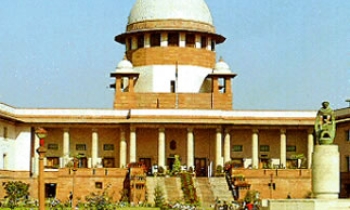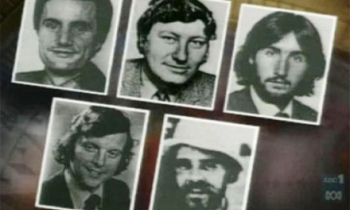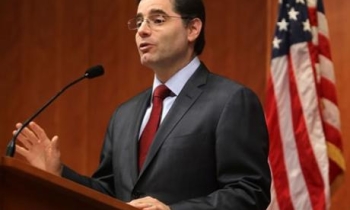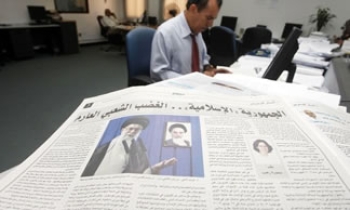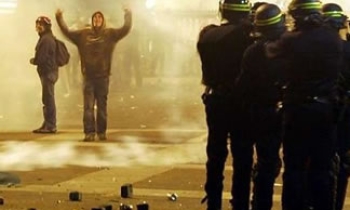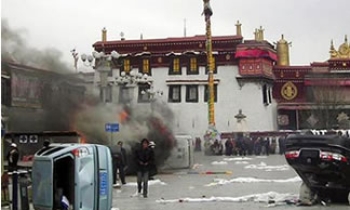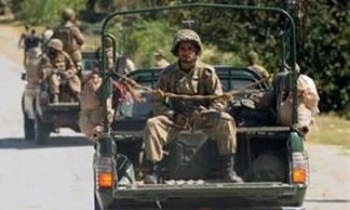Reuters has fired Lebanese freelance photographer Adnan Hajj after he transmitted at least two photographs from Lebanon that were doctored to make Israeli attacks seem more dramatic.
The news agency said Monday it is investigating Hajj's other work and has withdrawn all of Hajj's photos, about 920 images, from its archives as a precaution.
Hajj's career with Reuters unraveled Saturday after Reuters sent its subscribers one of Hajj's images of smoke rising from the Beirut skyline. The image, which appeared on several news web sites, had been doctored in Adobe Photoshop to show more smoke billowing higher into the sky.
The manipulation was so ham-handed that popular political blogs, beginning with Little Green Footballs, spotted it almost immediately. The bloggers used it to fuel long-running accusations that Reuters's news coverage is politically biased.
Critics quickly dug up other Hajj photos that appeared to be manipulated.
Reuters conceded Monday that an image by Hajj published Aug. 2, showing an Israeli jet dropping three flares (described in the caption as missiles), was also manipulated. Blogger Rusty Shackleford posted an analysis of the image that concluded that the image shows one flare that was cloned two more times.
Hajj was also among the Lebanon-based wire service photographers who conservative critics accused of covering a fake rescue in Qana last week. The accusations were not of digital manipulation, but rather of taking part in a dramatic rescue staged by Hezbollah actors for the benefit of journalists. Reuters, the Associated Press and Agence France Presse all strongly denied that their photographers would participate in covering such a staged event.
Hajj's two doctored photos made it onto the Reuters wire during a time when the service relaxed its editing procedures to allow prompt filing of photos from the Middle East. According to Reuters, Hajj has filed 43 photos directly through the agency's global picture desk, rather than through an editor in Beirut as is standard procedure, since the Israel-Lebanon conflict began July 12.
Reuters said Monday it will now use a stricter editing procedure so no photo from the region will be sent to subscribers without the review of a top picture editor. Reuters spokesperson Moira Whittle declined to say if any disciplinary action was being considered against any editors.
In a statement released by Reuters, global picture editor Tom Szlukovenyi said the manipulation of photographs is unacceptable.
"There is no graver breach of Reuters standards for our photographers than the deliberate manipulation of an image," he said. "Reuters has zero tolerance for any doctoring of pictures and constantly reminds its photographers, both staff and freelance, of this strict and unalterable policy."
Hajj had been a Reuters freelancer for over a decade, contributing photos to the agency from 1993 to 2003 and from April 2005 until now. Much of his work has been sports coverage, the agency says.
Reuters said Hajj was not responding to calls Monday, but told the agency Sunday that he altered the image of the smoke over Beirut to remove dust marks.
This is the second time in recent weeks a news photographer has been fired for manipulating photos.
Less than two weeks ago, Charlotte Observer photographer Patrick Schneider lost his job after he enhanced the color in a photo of a firefighter silhouetted against the morning sun. Schneider had been reprimanded for similar behavior before.
Schneider's case concerned adjusting the colors, not of fabricating entire portions of an image as Hajj apparently did. Hajj's case is closer to that of Los Angeles Times photographer Brian Walski, who was fired in 2003 for digitally combining two images from the war in Iraq.
Conservative bloggers have made a habit of combing through Reuters news coverage in search of bias against the U.S. administration, an ally of Israel.
Reuters editors frequently publish humorous pictures of the president or other administration members. Last September, for example, Reuters transmitted a photo that an editor had cropped and sharpened to show President Bush writing a note asking to take a bathroom break at a United Nations Security Council meeting.

